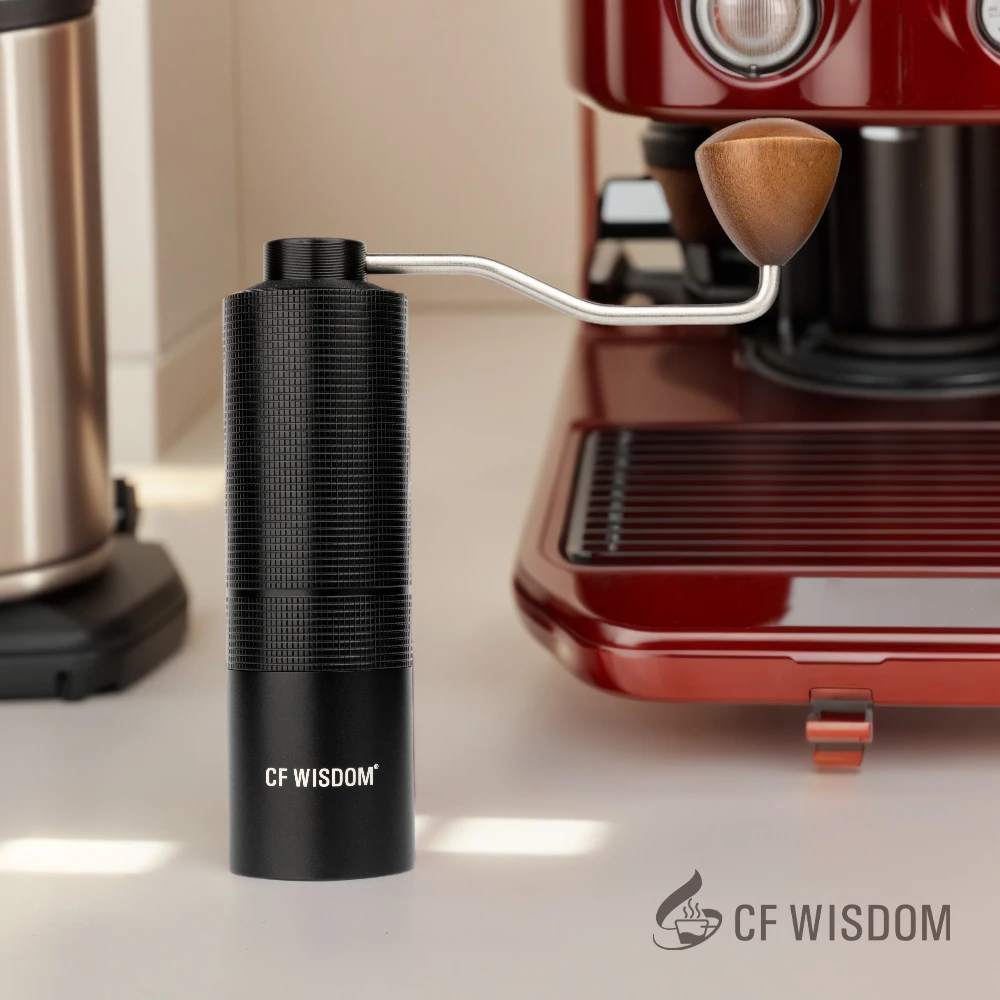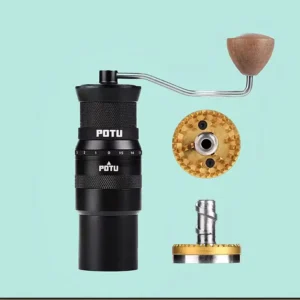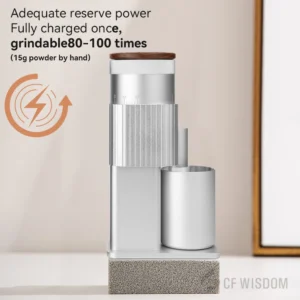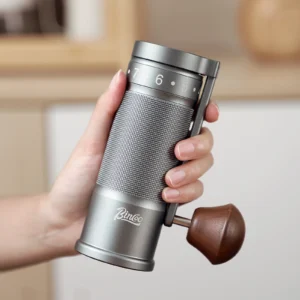Understanding Grind Size for Drip Coffee
Brewing great coffee at home starts with one crucial element: the grind size of your coffee beans. When it comes to drip coffee specifically, getting this element right can transform a mediocre cup into something exceptional. The size of your coffee grounds directly impacts extraction—how efficiently water pulls flavors, oils, and compounds from your coffee.
Proper grind size isn’t just a minor detail; it’s the foundation that affects every aspect of your brew’s flavor profile, strength, and overall quality. Too fine, and you’ll get bitter, over-extracted coffee. Too coarse, and you’ll end up with weak, sour coffee lacking depth.
For consistent results, burr grinders are essential tools in any coffee enthusiast’s arsenal. Unlike blade grinders that chop beans inconsistently, burr grinders provide consistent results with each use, allowing you to dial in the perfect grind size for your specific brewing method.
When we talk about “drip coffee,” we’re referring to both automatic drip machines (your standard countertop coffee maker) and manual pour-over methods like the V60, Chemex, or Kalita Wave. While there are slight variations between these methods, they all generally benefit from a similar grind profile.
Generally speaking, medium to medium-coarse grinds work best for drip coffee brewing. This starting point balances extraction time with flavor development, but as you’ll discover, precise grind settings may need adjustment based on your specific setup.
The Ideal Burr Size for Drip Coffee: Medium to Medium-Coarse
For most drip coffee brewing methods, the sweet spot lies in the medium to medium-coarse range, with particle sizes approximately 0.75-1mm. This size strikes the perfect balance for proper extraction during the typical 4-6 minute brewing process of drip coffee.
Visually, the ideal drip coffee grind resembles kosher salt or coarse sand. When you rub it between your fingers, it should feel slightly gritty but not powdery like espresso grind or chunky like French press grind. This consistency allows water to flow through the grounds at an appropriate rate while extracting the right compounds.
Why does this size work so well? It’s all about balance. With a medium grind, you create enough surface area for proper extraction without making the grounds so fine that they:
– Block water flow
– Over-extract (causing bitterness)
– End up in your cup
At the same time, the grounds aren’t so coarse that water rushes through too quickly, leaving behind essential flavors and resulting in weak coffee.
This recommendation applies broadly to both automatic drip machines and manual pour-over methods, though pour-overs sometimes benefit from a slightly finer adjustment within this range due to their different flow dynamics.
Keep in mind that this is a starting point. The influence of burr size on flavor extraction is profound, and you may need to make slight adjustments based on your specific coffee beans, brewing device, and personal taste preferences.
The Science Behind Extraction and Grind Size
Understanding the science behind coffee extraction helps explain why grind size matters so much. When hot water meets coffee grounds, it begins dissolving soluble compounds—the elements that give coffee its flavor, aroma, and body. This process is called extraction.
Coffee extraction is all about surface area. Finer grounds create more surface area for water to interact with, leading to faster extraction. Coarser grounds have less surface area, resulting in slower extraction. The goal is finding the perfect balance where water extracts the desirable compounds (fruity acids, sweet caramels) without pulling out too many undesirable ones (harsh bitterness).
In ideal brewing scenarios, you’re aiming to extract about 18-22% of the coffee’s mass into your cup. Extract too little (under-extraction), and your coffee tastes weak and sour. Extract too much (over-extraction), and bitterness dominates.
For drip coffee specifically, the medium grind works because it pairs appropriately with the typical 4-6 minute contact time between water and coffee. This differs significantly from espresso, which uses a fine grind for its short 20-30 second extraction, or French press, which uses coarse grounds for its 4-minute steep with no filtration pressure.
The relationship between grind size, flow rate, and extraction is particularly important for drip methods. If grounds are too fine, water pools and over-extracts; if too coarse, water rushes through without extracting enough flavor. The medium grind creates just enough resistance for water to pass through at the right pace while extracting optimal flavor.
When comparing brewing methods, the differences become clearer—drip coffee needs a significantly different grind than espresso, which requires ultra-fine particles for its pressurized brewing process.
Signs Your Grind Size Needs Adjustment
Recognizing when your grind size isn’t quite right is crucial for improving your coffee. Here’s how to identify and fix common issues:
Signs of Too Fine a Grind (Over-extraction)
– Bitter, harsh, astringent taste
– Dark, almost burnt flavor notes
– Dry, puckering mouthfeel
– Brewing takes longer than usual
– Coffee maker struggles to push water through
– Filter may clog
– Coffee appears very dark
Signs of Too Coarse a Grind (Under-extraction)
– Sour, sharp taste
– Weak, watery body
– Lacks sweetness and complexity
– Brewing happens too quickly
– Water runs through grounds too fast
– Flavor disappears quickly
– Coffee appears light
When your coffee tastes off, start by considering your grind size before blaming the beans. If your coffee consistently tastes bitter and strong, try a slightly coarser grind. If it’s consistently sour and weak, go a bit finer.
Keep a mental note or coffee journal to track adjustments. Sometimes just a small change in your grinder’s setting can dramatically improve results. The principles of adjusting your grind for optimal extraction apply across brewing methods, though the specific settings will differ.
Remember that finding the perfect grind size often involves some trial and error. Don’t be afraid to experiment with small adjustments until you find your ideal setting.
Why Burr Grinders Are Essential for Drip Coffee
The key to consistent, delicious drip coffee lies not just in what size you grind your beans, but how you grind them. This is where burr grinders prove their worth over blade alternatives.
Burr grinders work by crushing coffee beans between two abrasive surfaces (burrs) that rotate against each other. This crushing action produces consistently sized coffee particles. In contrast, blade grinders chop beans randomly, creating a mix of fine powder and large chunks—a recipe for uneven extraction.
The consistency of your grind directly impacts extraction quality. When grounds are uniform in size, they extract at the same rate, leading to balanced flavor. Inconsistent grounds extract at different rates simultaneously—fine particles over-extract (adding bitterness) while large chunks under-extract (adding sourness). This paradoxically creates coffee that’s both bitter and sour.
The difference between conical and flat burrs is subtle but worth noting. Conical burrs (one cone-shaped burr fitting inside another) tend to produce slightly fewer fine particles and operate more quietly, making them popular in home grinders. Flat burrs (two parallel rings) can produce extremely consistent particle size but might generate more heat during grinding.
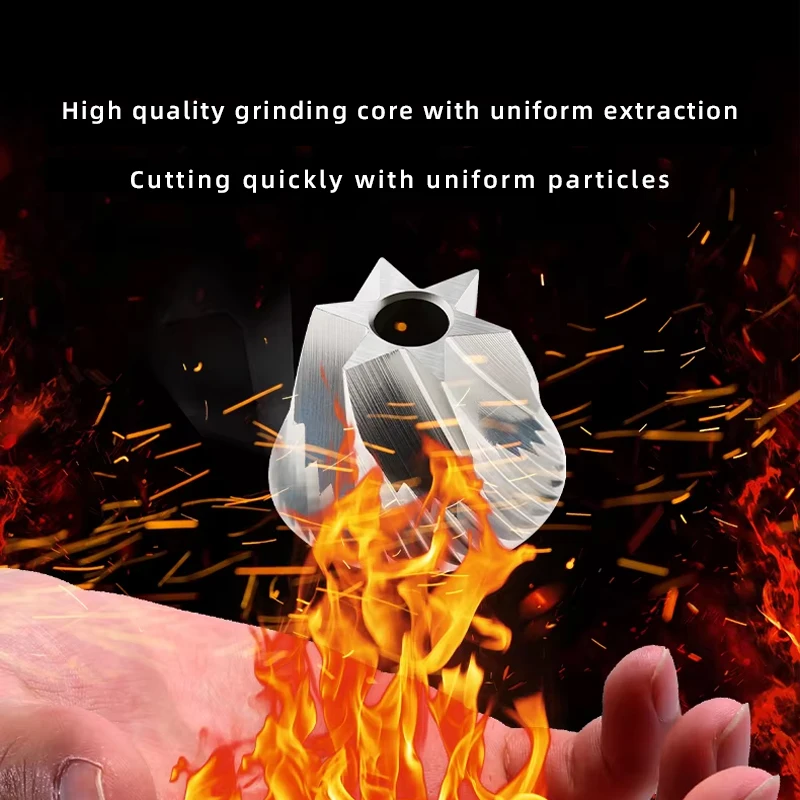
For most home brewers, a quality manual coffee burr grinder will provide significantly better results than any blade grinder or pre-ground coffee. The investment pays dividends in your cup every morning.
Choosing the Right Burr Grinder for Drip Coffee
When selecting a burr grinder specifically for drip coffee, several factors can help guide your decision:
Key Features to Look For:
– Grind size adjustability (multiple settings for fine-tuning)
– Burr quality and material (ceramic or steel)
– Consistency of grind output
– Build quality and durability
– Ease of cleaning and maintenance
The debate between conical and flat burrs for drip coffee isn’t as critical as it might be for espresso. Both styles can produce excellent results for drip brewing, though conical burrs are more common in home grinders and tend to be more affordable while still delivering consistent results.
Manual versus electric is another consideration. Manual grinders offer several advantages for drip coffee enthusiasts:
– Greater portability
– No electricity needed
– Often more affordable for the same quality burrs
– Quieter operation
– More direct control over the grinding process
Burr material matters too. Ceramic burrs tend to stay sharp longer and don’t transfer heat to the beans during grinding, while steel burrs can achieve greater precision but may dull slightly faster over years of use.
The most critical factor is adjustability. Look for grinders with enough settings to dial in your perfect grind—too few settings limits your ability to fine-tune. Step grinders (with distinct “clicks” between settings) work well for drip coffee, while stepless adjustment (infinite settings) might be more important for espresso.
Savor Suite offers several hand burr grinder options designed specifically to achieve the consistency needed for excellent drip coffee.
Dialing In Your Burr Grinder for Perfect Drip Coffee
Finding your perfect grind setting isn’t a one-size-fits-all proposition—it’s about systematic experimentation. Here’s a methodical approach to dialing in your grinder:
- Start with the manufacturer’s recommendation for drip coffee (usually in the middle of the grind range)
- Brew a control cup and take notes on taste, brew time, and appearance
- Make one small adjustment at a time (finer if coffee tastes sour/weak, coarser if bitter/harsh)
- Keep all other variables consistent (coffee amount, water temperature, brewing time)
- Taste and evaluate each result before making further adjustments
- Document your findings for different coffees and brewing methods
When evaluating results, focus on overall balance. The perfect setting creates coffee that isn’t noticeably sour or bitter, with pleasant acidity that brightens rather than shocks, sweetness that satisfies, and body that feels complete.
Be aware that different variables might require grind adjustments:
– Darker roasts often benefit from slightly coarser grinds
– Lighter roasts may need slightly finer grinds
– Different coffee origins may extract differently
– Your brewing device’s filter type affects flow rate
The process of dialing in isn’t a one-time event—it’s ongoing as you try different coffees and as your burrs gradually wear over time. Precision manual grinders with clear, consistent adjustment mechanisms make this process significantly easier and more reliable.
Fine Adjustment Hand Grinder, Precision Manual Grinder, Travel Coffee Grinder
Price range: $185.11 through $494.63 Select options This product has multiple variants. The options may be chosen on the product pageHand Burr Grinder, Hand Crank Coffee Grinder, Manual Espresso Grinder, Portable Coffee Grinder
Price range: $262.72 through $300.22 Select options This product has multiple variants. The options may be chosen on the product pageManual Burr Mill, Manual Coffee Grinder Stainless Steel, Manual Coffee Mill Grinder, Mechanical Coffee Grinder
Price range: $127.26 through $130.32 Select options This product has multiple variants. The options may be chosen on the product pageHand Burr Grinder, Manual Coffee Grinder Stainless Steel, Precision Manual Grinder
Price range: $183.64 through $187.52 Select options This product has multiple variants. The options may be chosen on the product page
Remember that small adjustments can make big differences in flavor. Be patient with the process—the perfect cup is worth the effort.
Visual Guide: Identifying the Perfect Drip Coffee Grind
Recognizing the right grind size visually is a valuable skill for any coffee enthusiast. For drip coffee, aim for grounds that resemble the following:
Medium Grind (standard drip coffee)
– Similar to regular beach sand
– Slightly coarser than table salt
– Less fine than granulated sugar
– Individual particles visible but small
Medium-Coarse Grind (for some pour-over methods)
– Resembles coarse sand or kosher salt
– Distinct particles easily visible
– Still finer than raw sugar
– Much finer than French press grind
For context, espresso grinds look like fine powder (similar to flour or powdered sugar), while French press grinds look like coarse breadcrumbs or rock salt. Your drip coffee grind should fall between these extremes, leaning toward the finer side.
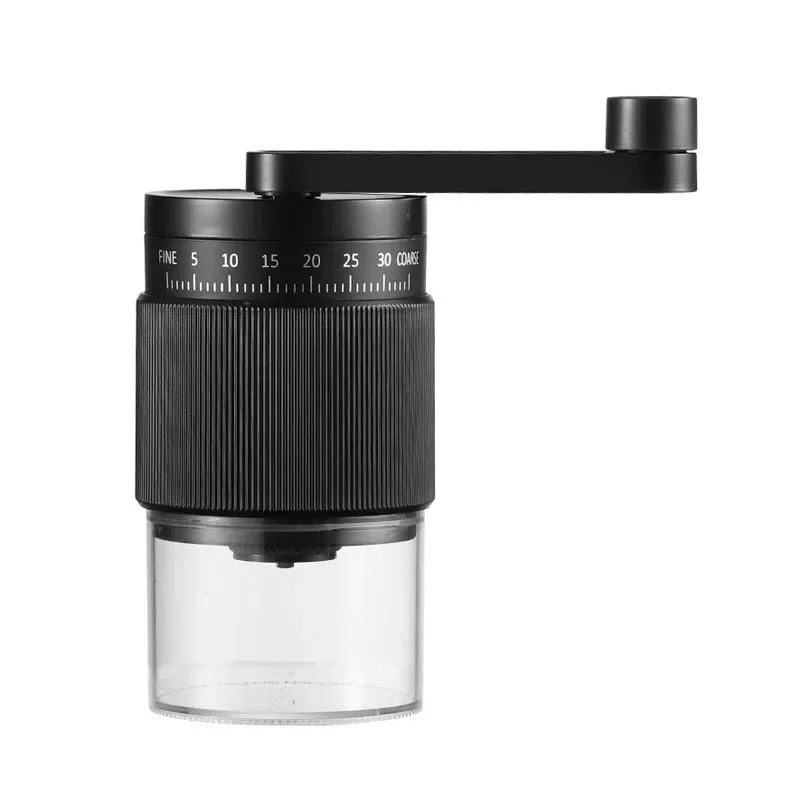
Consistency is just as important as size. Examine your grounds carefully—they should be uniform, with few outliers (either very fine powder or large chunks). Quality ceramic burr coffee grinders produce this consistency reliably.
A helpful test: sprinkle some grounds on a dark surface and look for uniformity. The more consistent your particles, the more even your extraction will be.
Common Grind Size Mistakes to Avoid
Even experienced coffee enthusiasts make these common grinding mistakes:
Using one grind size for all brewing methods
Many people use the same grind setting regardless of whether they’re making drip coffee, French press, or pour-over. Each method requires its own specific grind size for optimal extraction.Relying on pre-ground coffee
Pre-ground coffee is typically a middle-of-the-road medium grind that doesn’t optimize extraction for any specific brewing method. It’s also losing flavor by the minute once ground.Not adjusting for different beans and roast levels
Light roasts and dense beans often benefit from a slightly finer grind to extract properly. Dark roasts, being more soluble, usually need a coarser grind to prevent over-extraction.Ignoring grinder maintenance and calibration
Over time, burrs can shift slightly or collect coffee oils that affect grind consistency. Regular cleaning and occasional recalibration ensure consistent results.Making dramatic grind size changes
When troubleshooting, many people make huge adjustments rather than small, incremental changes that allow for proper evaluation.
Understanding the relationship between coffee grinder burr size and extraction quality helps avoid these common pitfalls. Remember that grinding is both science and art—it requires both knowledge and intuition developed through experience.
Beyond Grind Size: Other Factors Affecting Your Drip Coffee
While grind size is crucial, several other factors work in concert to create exceptional drip coffee:
Water Quality and Temperature
Great coffee is about 98% water, so quality matters enormously. Filtered water at 195-205°F (90-96°C) extracts coffee properly. Too cool, and extraction is weak; too hot, and bitter compounds dominate.
Coffee-to-Water Ratio
Start with a 1:16 ratio (1 gram coffee to 16 grams water, or about 1 tablespoon per 4 ounces of water) and adjust to taste. This ensures enough coffee for proper extraction without being wasteful.
Bean Freshness
Coffee is at its peak flavor within 2-4 weeks of roasting. Old beans produce flat, lifeless coffee regardless of grind size. Always check roast dates and buy appropriate quantities.
Brewing Device Specifics
Different drip brewers create different flow dynamics. Flat-bottom filters often work better with slightly coarser grinds than cone-shaped filters. Consider your specific equipment when adjusting grind size.
Brew Time
Total brew time matters just as much as grind size. For automatic drip machines, the full cycle should take 4-6 minutes. Significantly longer or shorter times suggest grind size issues.
For the best possible results, consider all these factors alongside your grind size. Quality hand coffee grinders address one essential piece of this puzzle, but the complete picture requires attention to all variables.
Maintaining Your Burr Grinder for Consistent Results
A well-maintained grinder provides consistent results cup after cup, while a neglected one gradually delivers less consistent grounds. Here’s how to keep your burr grinder performing optimally:
Regular Basic Cleaning (Weekly)
1. Empty the hopper of beans
2. Brush out visible grounds from burrs and chambers
3. Wipe down external surfaces
4. Run a small handful of grinder cleaning tablets if available
Deep Cleaning (Monthly or Every 1-2 Pounds)
1. Disassemble according to manufacturer instructions
2. Brush all parts thoroughly with a grinder brush
3. Remove coffee oils with a clean, dry cloth
4. Reassemble carefully, ensuring proper alignment
Coffee oils and fine particles build up over time, affecting both the grinder’s performance and your coffee’s taste. These oils can go rancid, adding unpleasant flavors to fresh beans and potentially causing burrs to bind or jam.
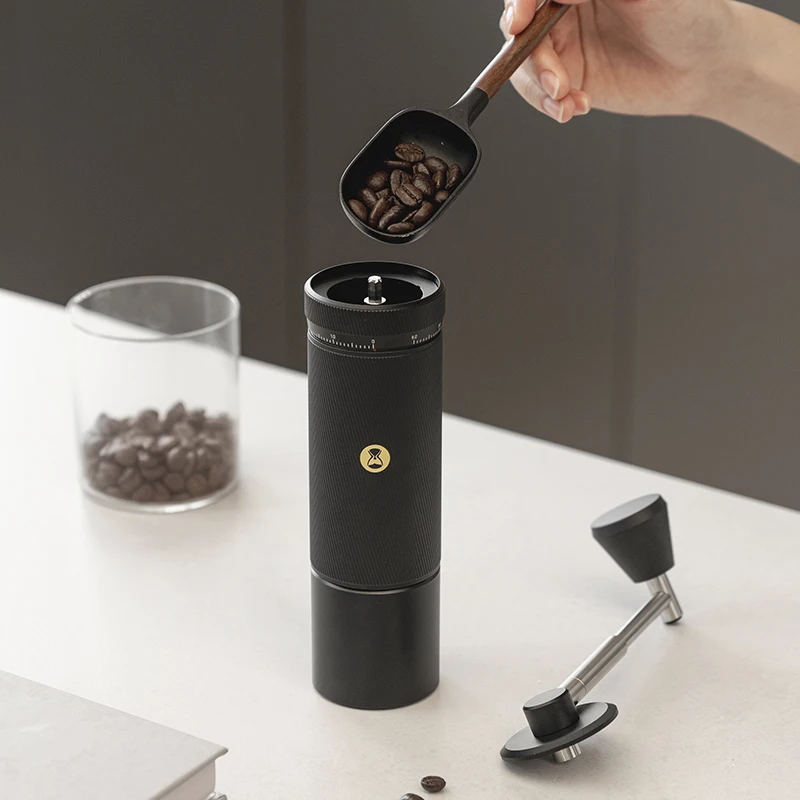
Watch for these signs that your burrs might need replacement:
– Increasing “fines” (coffee dust) in your grounds
– Less consistency in particle size
– More difficulty achieving consistent brew results
– Unusual noises during grinding
– Significantly longer grinding time for the same amount of coffee
With proper maintenance, quality burrs can last for years or even decades, continuing to deliver the consistent grind size essential for great drip coffee.
FAQs About Burr Size for Drip Coffee
Can I use pre-ground coffee for drip brewing?
You can, but it won’t produce optimal results. Pre-ground coffee is generally one-size-fits-all and begins losing flavor immediately after grinding. For the best taste, grind fresh beans just before brewing with a properly calibrated burr grinder.
Is there a difference between steel and ceramic burrs for drip coffee?
Both can produce excellent drip coffee grinds. Ceramic burrs tend to stay sharp longer and generate less heat during grinding, while steel burrs might provide slightly more precision. For home drip brewing, either type in a quality grinder will yield good results.
Do I need to adjust my grind size for different coffee beans?
Yes. Lighter roasts often benefit from a slightly finer grind to help extraction, while darker roasts extract more easily and may need a coarser grind. Different origins and processing methods can also impact the ideal grind size.
How do I know when my burrs need replacement?
Look for increasing inconsistency in grind size, more coffee dust in your grounds, longer grinding times, or coffee that consistently tastes wrong despite adjustment attempts. Quality burrs in a well-maintained manual coffee bean grinder can last many years before replacement becomes necessary.
Does altitude affect the ideal grind size for drip coffee?
Yes. At higher altitudes, water boils at lower temperatures, which can slow extraction. You might need a slightly finer grind at high altitudes to compensate for the lower brewing temperature.
Troubleshooting Common Drip Coffee Issues Related to Grind Size
Problem: Coffee draining too slowly, brewing takes forever
– Likely cause: Grind is too fine
– Solution: Adjust to a coarser setting
– Other factors to check: Filter might be clogged or doubled; brewer might need cleaning
Problem: Coffee draining too quickly, tastes weak
– Likely cause: Grind is too coarse
– Solution: Adjust to a finer setting
– Other factors to check: Coffee-to-water ratio might be too low; water might not be hot enough
Problem: Coffee tastes both bitter and sour
– Likely cause: Inconsistent grind size causing simultaneous over/under-extraction
– Solution: Ensure you’re using a quality manual burr mill with consistent output; clean grinder thoroughly
– Other factors to check: Water temperature fluctuations; uneven brewing technique
Problem: Coffee tastes flat despite proper grind
– Likely cause: Beans are stale
– Solution: Use freshly roasted beans (within 2-4 weeks of roast date)
– Other factors to check: Water quality; brewing temperature
Problem: Grounds appearing in cup despite medium grind
– Likely cause: Inconsistent grinder producing too many fines
– Solution: Clean grinder thoroughly; check for burr alignment issues
– Other factors to check: Filter quality; brewing device integrity
Expert Tips for Perfect Drip Coffee Grinding
Grind just before brewing – Coffee begins losing flavor compounds within minutes of grinding. For maximum freshness, grind only what you need just before brewing.
Use the “tap and level” technique – After grinding, gently tap the side of your brewing device to level the grounds for even extraction. Avoid tamping drip coffee grounds as this can lead to channeling.
Consider the RDT method – To reduce static and grinder retention, add a tiny drop of water to your beans before grinding (Ross Droplet Technique). This minimal moisture prevents grounds from sticking to the grinder.
Match grinder to coffee consumption – Quality grinder materials matter, but also ensure your grinder matches your needs. Hand grinders offer excellent quality for smaller batches, while electric might be better for larger volumes.
Evaluate grind visually before brewing – Take a moment to check your grounds for consistency before brewing. This simple habit helps catch issues before they affect your coffee.
Adjust for ambient conditions – Humidity and temperature can subtly affect grinding and extraction. In very dry conditions, you might need a slightly coarser grind; in humid conditions, slightly finer.
Trust your taste above all else – While guidelines are helpful starting points, your personal preference matters most. If you enjoy the results of a slightly finer or coarser grind than recommended, that’s the right grind for you.
By focusing on consistency, freshness, and incremental adjustments, you’ll discover the perfect grind size for your specific drip coffee setup and taste preferences.

